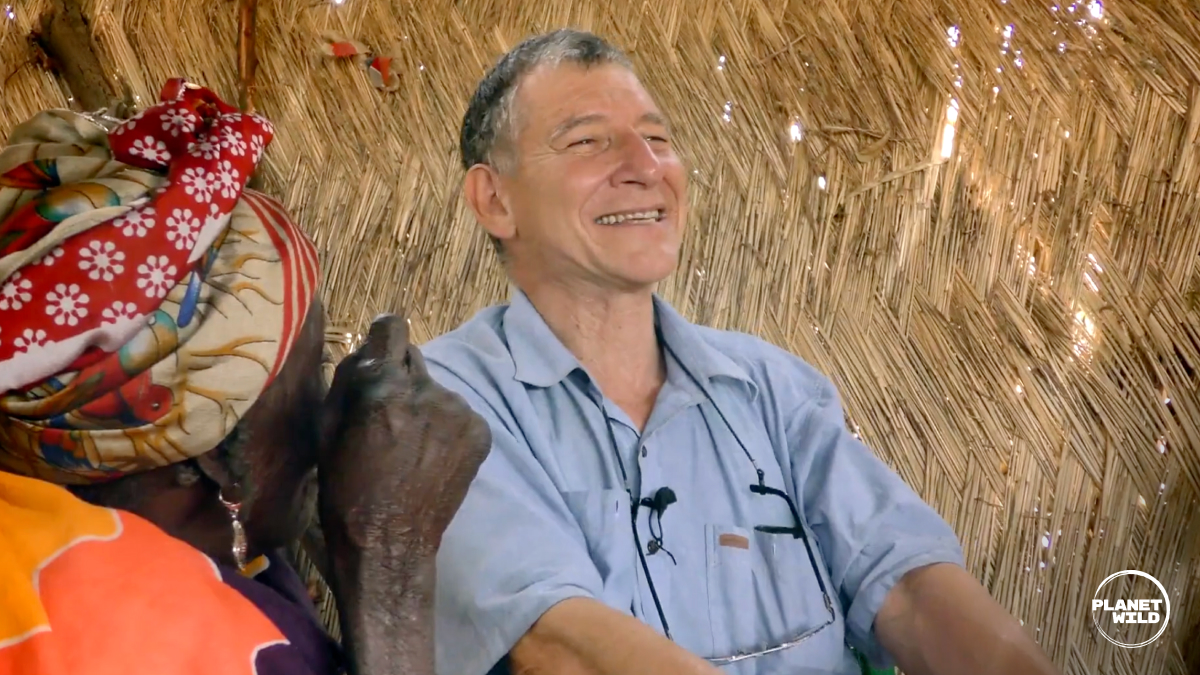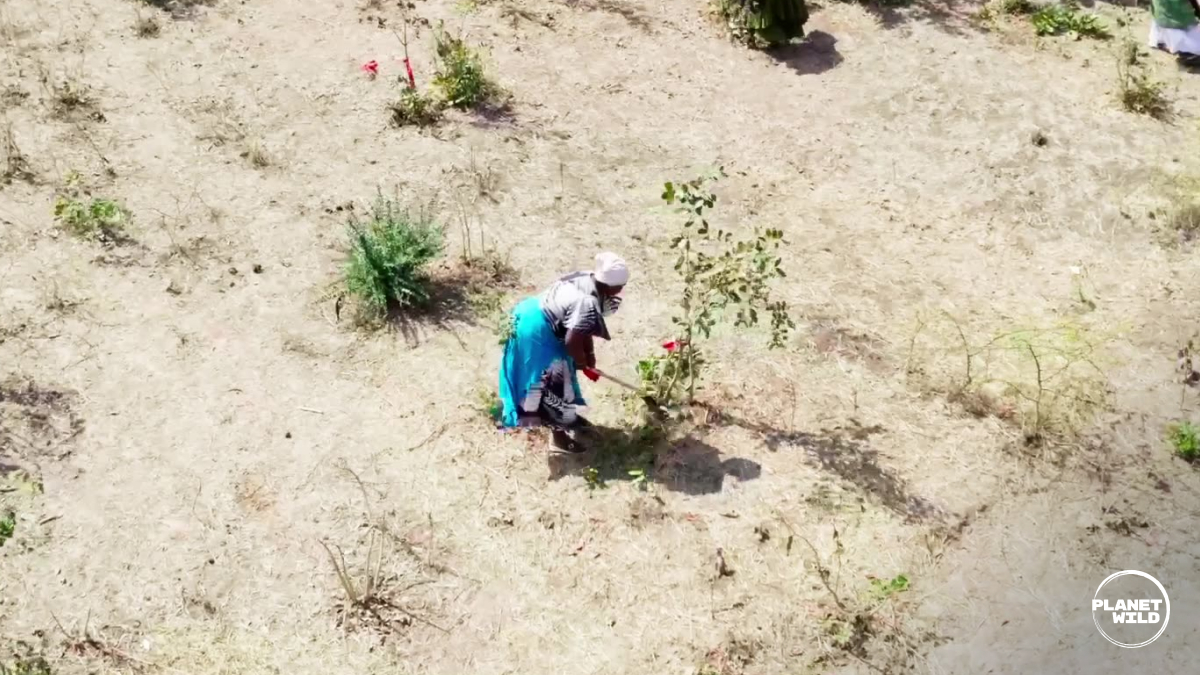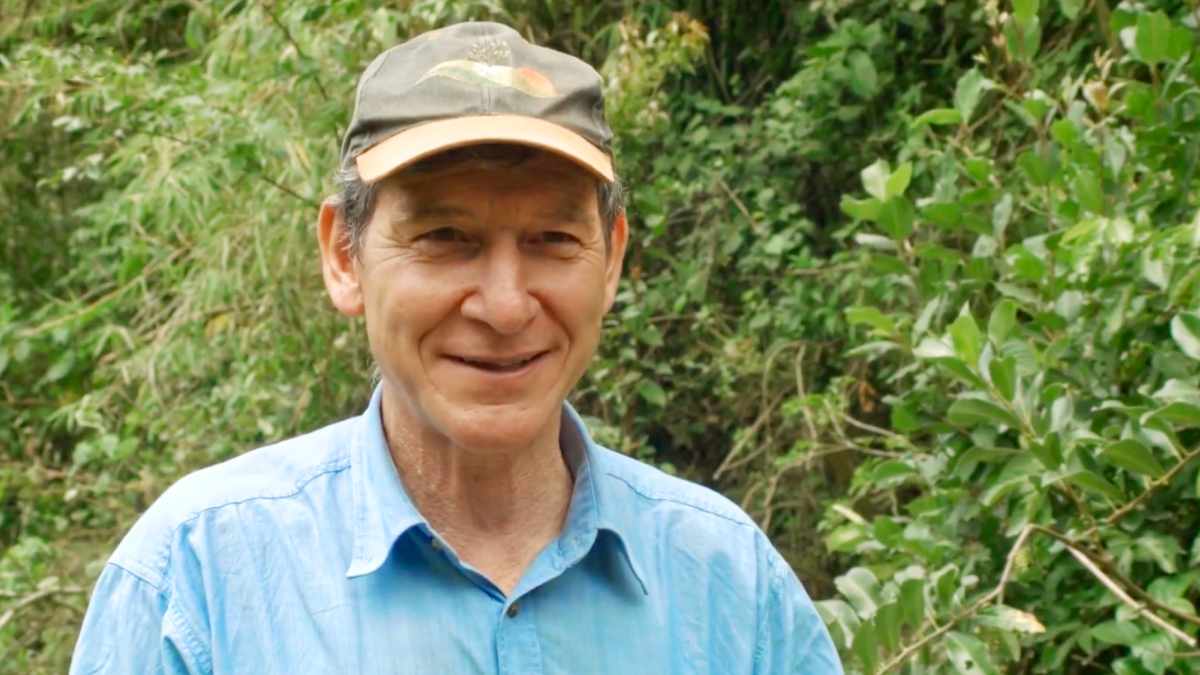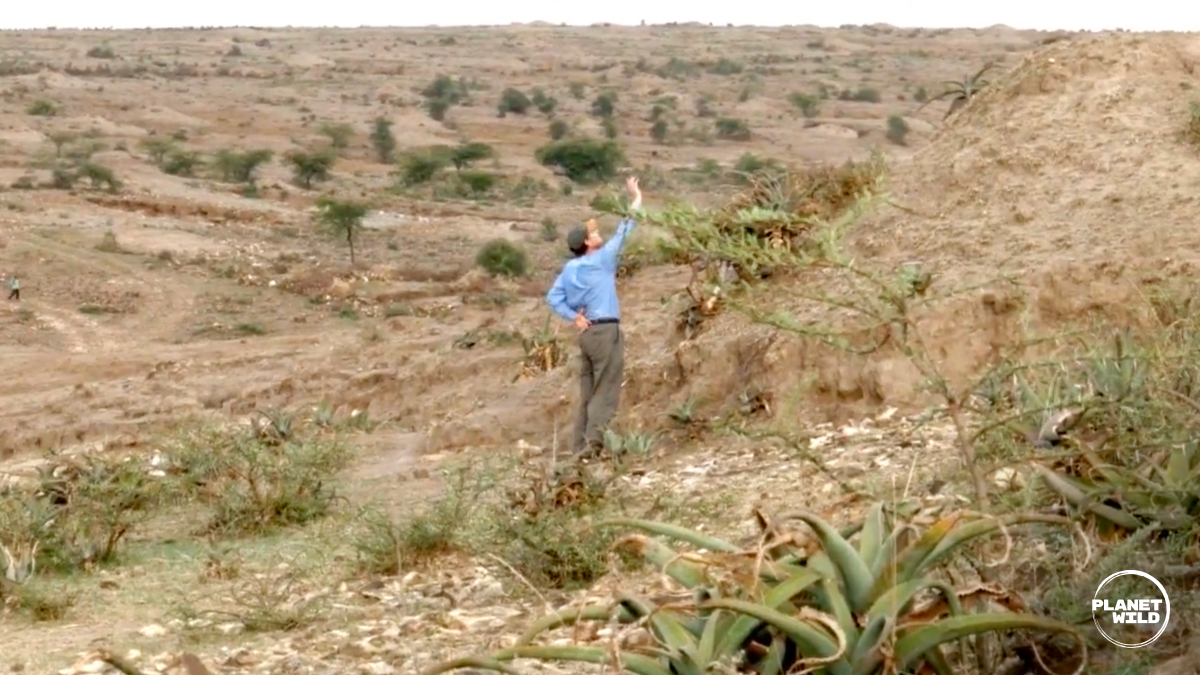Full interview with Tony Rinaudo, the man behind FMNR

Earlier this year Trishala from Planet Wild had the privilege of speaking with Tony Rinaudo, the Australian agronomist, humanitarian, and environmental champion sometimes called ‘the Forest Maker.’
For more than four decades, Tony has worked across Africa helping to transform degraded landscapes and empowering local communities through a simple yet revolutionary approach to regreening called Farmer Managed Natural Regeneration (FMNR). His work with World Vision has helped restore millions of hectares of land, improve access to food, and inspired a global movement. Now, other organizations like the Lead Foundation in Tanzania are using this technique to regrow the land and empower communities.
In this conversation, Trish and Tony talk about his journey, from the early years in Niger to the global impact of FMNR, and hear his insights on hope, resilience, and why we need to work with nature rather than against it.

Tishala Naidu: Hi Tony, thank you so much for taking the time to talk to us about your life and work. Let’s start at the beginning, how did you establish the FMNR technique?
Tony Rinaudo: When my wife and I moved to Niger in 1980, we were fresh out of university, young, idealistic, and eager to change the world. We joined a tree-planting project in the Sahel, where deforestation had led to desertification, drought, soil erosion, and hunger. I was convinced that if deforestation was the problem, then planting trees had to be the solution.
I threw myself into the work, studying manuals, consulting experts, experimenting with local and exotic seeds, different methods, and timing, but nothing succeeded. 80% of the seedlings died, and it was disheartening, but I knew there was a reason I was there.
One day, while delivering yet another load of seedlings, I looked out over the barren landscape, feeling defeated. Then, I noticed what I thought was a bush. When I looked closer, I realized it wasn’t a bush at all — it was a tree, growing back from an old stump buried in the sand. That moment changed everything.
I realized I didn’t need expensive technology or endless seedlings, the solution was already there in the land itself. There were millions of living tree stumps just waiting to regenerate. But the real challenge wasn’t the desert or the climate — it was people’s attitudes. If we could change how farmers saw the value of trees on their land, we could bring life back to the landscape. From that day on, I knew I wasn’t just regreening the land — I was regreening mindscapes.

Trishala: How did you know that the right thing to do would be to prune off the extraneous branches and leave this single dominant branch?
Tony: There was a lot of trial and error and experimentation. Even if I had the perfect way to do this, you would still have to take into account people's needs and their perceptions. At the end of the day, it has to work for the land users and meet their needs.
After you cut a tree, there'll be lots of shoots that grow. In some cases, more than 30, even 40 stems from one stump. There's also a lot of competition here and for light, for moisture, nutrients, even for space, so we started thinning down. Instead of just leaving one stem, which in some ways might have been ideal, we needed to consider that here, people’s primary source of energy is firewood, so we started by leaving five stems, because then by the time you get to the fifth year you'll have quite a decent sized tree, and it'll be less tempting to cut it down because you can just cut some of the branches, which allows replacements to regrow.
I also had the idea to seek out volunteers, because at the time, the majority of the people said I was just a crazy white guy! But in every community, there are always people who are a little bit more entrepreneurial, so I asked these guys to work with me, and treat it like an experiment. If you label something as an experiment from the outset, it could succeed, it could fail, but that's not an embarrassment because it's a test. So let's experiment together.
We started off with small corners of land where we could experiment for one year to see what happens, but within just three months you could see the transformation from a useless looking bush into a young sapling, which was a huge encouragement.

Trishala: Was it difficult to get local farmers on board with your ideas?
Tony: In the early 1980s, I struggled to get people in Niger to try my tree regeneration idea. Even when a few volunteers started to see results, others came at night and cut down their trees.
In 1983, things could have completely fallen apart. There was a terrible drought year, but through a food-for-work program, I suddenly had the whole community involved. People weren’t happy about it — they thought I was making them work on something that would harm their crops, but when the rains came in 1984, and they had a bumper harvest, they realized the trees hadn’t done any damage.
When the food aid ended, most farmers stopped and even cut down many of the trees, but about a quarter of them noticed something different: the soil was moister, the land looked healthier, and old memories of the trees’ uses came back. Those farmers kept going, and each year the benefits became clearer. Over time, more and more people joined in. After twenty years, the practice had spread across five million hectares, and farmers had regenerated about 200 million trees. I went from being seen as “the crazy white guy” to being called, in their words, “the chief of farmers.”

Trishala: This method isn’t exactly new, right? It just sort of faded. I wondered if you had experienced anyone saying to you, hey, this seems familiar, or we did something similar?
You're exactly right. What I came to realize later is that what we now call Farmer Managed Natural Regeneration isn’t really new at all. In one form or another, it’s a traditional practice that’s existed for centuries — in Europe, Africa, Asia, and the Americas. Over time, those methods were largely lost through colonization, modernization, and, frankly, greed. So I see what I did less as an invention and more as a rediscovery.
At first, I didn’t know that people had once managed trees and vegetation on their farms. The land looked so barren, it never occurred to me that it had once been cared for that way. Later, I met farmers who had quietly continued the tradition — especially in West Africa, where agroforestry parklands were common. They cultivated useful species like baobab, which provides edible leaves and seeds, and locust bean, another valuable food tree. Certain species were still being deliberately managed, even if the broader knowledge had faded.
Trishala: Why do you think teaching and learning could be the main thing that needs to happen at this time?
Tony: One of the biggest challenges in this work isn’t just environmental — it’s about changing beliefs. You can’t simply go into a community and tell people they’ve destroyed their environment or order them to change. Nobody likes being blamed or told what to do. So, our approach has to be gentle and respectful. What people believe is deeply personal, so we focus on learning together rather than lecturing.
I never want to leave people in despair, though. So I invite them on a journey — let’s learn together. We start small, experimenting on a small plot of land. I share the story of Niger, one of the harshest places on earth, and how people there succeeded. Some are skeptical, others hopeful, but most agree to try. And the beauty of Farmer Managed Natural Regeneration is that you only need a year before you start seeing results — healthier soil, more fodder, wild foods returning, even a bit of firewood. Those small signs spark curiosity and confidence.
Actually, the biggest change that I see is this restoration of hope. People who have hope, who feel, yes, it's worth my effort to try something new.

Trishala: Why do you think, in your words, FMNR this is the best method?
Tony: I don’t believe in silver bullets, and FMNR alone is not the solution, but when I first looked at the economics of traditional tree planting, I realized how unsustainable it was. Around $60 million had been spent on tree planting projects, and even though some succeeded, the total forest created was about 20,000 hectares — roughly $8,000 per hectare. With an estimated 370 million hectares of degraded land across the Sahel, no organization in the world could afford to restore that area using conventional methods.
By contrast, through Farmer Managed Natural Regeneration (FMNR), farmers in Niger restored about five million hectares (around 200 million trees) at a fraction of the cost, roughly $50 per hectare during project phases, and in reality, once the idea takes root, it costs little more than the farmer’s own labor — maybe $16 to $18 per hectare.
Over the years, I’ve learned three key lessons.
First, nature isn’t broken or helpless. We don’t always need expensive, complex solutions — nature is ready and willing to heal itself if we simply stop the destructive practices that hold it back: over ploughing, overgrazing, burning. With simple actions like pruning or water harvesting, we can help regeneration happen faster.
Second, people aren’t the problem — they’re the solution. Yes, human activity caused degradation, but often it’s due to bad policies. When people don’t have rights to the trees on their land, they have no incentive to protect them. Once farmers in Niger were told they could use and benefit from their trees, they began nurturing and protecting them instead of cutting them down. Empowerment turns destroyers into stewards.

Third, I discovered the power of movements. For years, I worked project by project with limited reach. But once FMNR became an idea — simple, low-cost, and high-benefit — it spread naturally. Farmers saw the results, shared the knowledge, and taught one another. In Niger alone, FMNR spread at a rate of about a quarter of a million hectares per year for 20 years — quietly transforming the landscape, farmer by farmer.
Trish: Is there anything that you would like our audience to know about FMNR, about the hope for the planet?
Tony: I think the first step for all of us is to have greater respect for the environment, to really listen and observe what nature is trying to tell us. For years, I walked over the small bushes that held the key to regeneration, never asking the questions that could have saved me years of effort and expense. So my message is simple: listen to nature and tread lightly on the earth.
This planet is our only home, and we’re at a critical point in history — facing climate change, biodiversity loss, land degradation, and a growing population. No matter who we are or where we live, we can each do something, however small, to make a positive difference. Start with one action today, something that improves the environment, and then build on it tomorrow. Step by step, we can create real change.
Check out Planet Wild's latest mission
About Planet Wild
Planet Wild is committed to rewilding the planet through monthly missions that work directly with grassroots organizations dedicated to fighting the biodiversity crisis. When you become a Planet Wild member, your contribution will directly fund innovative and exciting projects all over the world, so you can make a difference from home. Learn more about what we do here.